Sharon tulip, Sun's-eye tulip,
Hebrew: צבעוני ההרים, Arabic: زنبق, قرن الغزال
| Scientific name: | Tulipa agenensis DC. | |
| Synonym name: | Tulipa oculis-solis St-Amans, Tulipa sharonensis Dinsmore | |
| Common name: | Sharon tulip, Sun's-eye tulip | |
| Hebrew name: | צבעוני ההרים | |
| Arabic name: | Kam el-Ghazal,قرن الغزال، ثريا | |
| Family: | Liliaceae, שושניים |
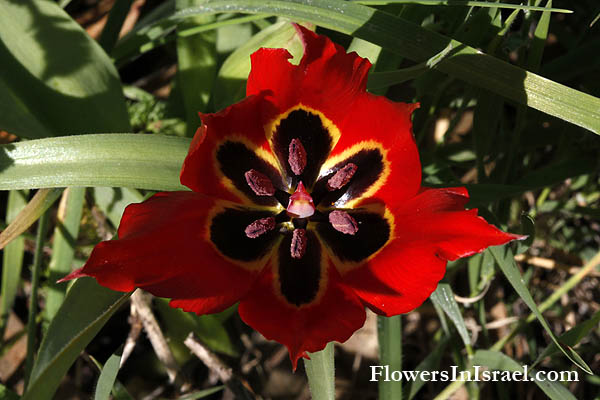
|
| Life form: | Geophyte | |
| Stems: | Approximately 40 cm high, hairless | |
| Leaves: | Rosette, lanceolate to linear-lanceolate | |
| Inflorescence: | Flowers solitary | |
| Flowers: | Red, black, yellow; perianth-segments c. 3 times as long as wide, elliptical to elliptic oblong, acuminate | |
| Fruits / pods: | Loculicidal capsules | |
| Flowering Period: | February, March, April | |
| Habitat: | Mediterranean maquis and forest, Batha, Phrygana | |
| Distribution: | Mediterranean Woodlands and Shrublands | |
| Chorotype, טיפוס התפוצה: | Med - Irano-Turanian | |
| Summer shedding: | Ephemeral |
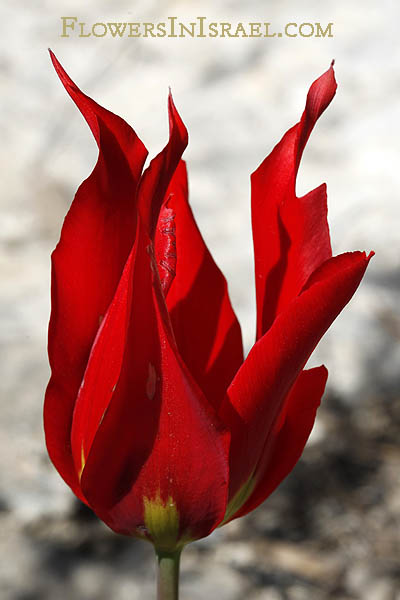
Derivation of the botanical name: Tulipa, from the Persian word "thuliban" or "dulbend", meaning "a turban". This evolved into the Turkish "dulbend" and "tulbend, Latin "tulipa" and English "tulip". agenensis, from Agen, town in south-western France, described by Augustin Pyramus de Candolle in 1804 and named Tulipa agenensis, "the tulip of Agen". oculis-solis, oculus, eye; solis, sun; eye of the sun. sharonensis, refers to the Sharon Plain, a coastal plain in Israel.
Tulipa agenensis subsp. sharonensis is described in Flora Palaestina as a smaller version of Tulipa agenensis, usually growing 20 to 25 cm tall and with the leaf only 1 to 2 cm wide. the flower is also slightly smaller than that of Tulipa agenensis. It was originally described as a distinct species, Tulipa sharonensis, by John Dinsmore in 1934. It is restricted to sandy soils and hills along the coastal plain of the eastern Mediterranean. Tulipa agenensis subsp. agenensis ⇒ Cinfined to Terra Rossa on hard limestone and dolomite. Tulipa agenensis subsp. sharonensis (Dinsmore) Feinbrun ⇒ Only on sandy soils - sandy loam (Hamra), and calcareous sandstone (Kurkar). The tepals have yellowish tint at their abaxial (lower) face. Tulips were introduced in Western Europe and the Netherlands in the 17th century by Carolus Clusius, a famous biologist from Vienna. In the 1590's he became the director of the Hortus Botanicus, the oldest botanical garden of Europe, in Leiden, the Netherlands. He was hired by the University of Leiden to research medicinal plants and, while doing so, he received some bulbs from his friend, Ogier de Busbecq, the Ambassador to Constantinople. He had seen the tulip growing in the palace gardens and sent a few to Clusius for his garden in Leiden. It soon gained major popularity as a trading product, especially in Holland. The interest in the flower was huge and bulbs sold for unbelievably high prices. Botanists began to hybridize the flower. Hybrids and mutations of the flower were seen as rarities and a sign of high status. In the months of late 1636 to early 1637, there was a complete "Tulipmania" in the Netherlands. The bulbs were usually sold by weight while they were still in the ground. This trade in un-sprouted flowers came to be called "wind trade". The traders made huge amounts of money every month. People started selling their businesses, family homes, farm animals, furnishing and dowries to participate. The government could not do anything to stop "Tulipmania"; the trade was all about access and demand. Finally, the tulip did not appear to quite so rare as to justify such high prices. Over-supply led to lower prices and dealers went bankrupt while many people lost their savings because of the trade. This "Tulip Crash" made the government introduce special trading restrictions on the flower. It is said that the tulip became so popular because of its bright colours, dramatic flames and frilly petals. To have tulips in one's home was a way to impress and, when the wealth spread down the social ladder, so did the urge for tulips. The Canons of Dort, or Canons of Dordrecht, formally titled The Decision of the Synod of Dort on the Five Main Points of Doctrine in Dispute in the Netherlands, is the judgment of the National Synod held in the Dutch city of Dordrecht in 1618–19. The writers of The Canons of Dort organized their arguments in five points, each corresponding to the five points set out in the Remonstrance. These five points have come to be known as The Five Points of Calvinism, or by the acronym T.U.L.I.P. These five points are: T stands for “total depravity:” We are all sinners all the way through (Gen. 6:5; Rom. 3:23). U stands for “unconditional election:” God chose to save me for reasons known only to him (Eph. 1:4-5). L stands for “limited atonement:” Christ got what he paid for when he died for his people, and his people alone (John 10:14-15). I stands for “irresistible grace:” When the Spirit changes my heart, I will and I must come to God in faith (John 6:44-45). And, finally, P stands for the “perseverance of the saints:” My faithful God will see me safely to my eternal home (Rom. 8:28, 30). Alexandre Dumas, père (1802 – 1870), told the story in his historical novel The Black Tulip: The city of Haarlem in The Netherlands has set a prize of 100,000 guilders to the person who can grow a black tulip, sparking competition between the country's best gardeners to win the money, honour and fame. The young and bourgeois Cornelius van Baerle has almost succeeded, but is suddenly thrown into the Loevestein prison. There he meets the prison guard's beautiful daughter Rosa, who will be his comfort and help, and at last his rescuer. The Bible does not mention tulips specifically. However, biblical scholars now tell that the phrase “lilies of the field” refers to many different kinds of flowers, including the tulip. Bible resources:
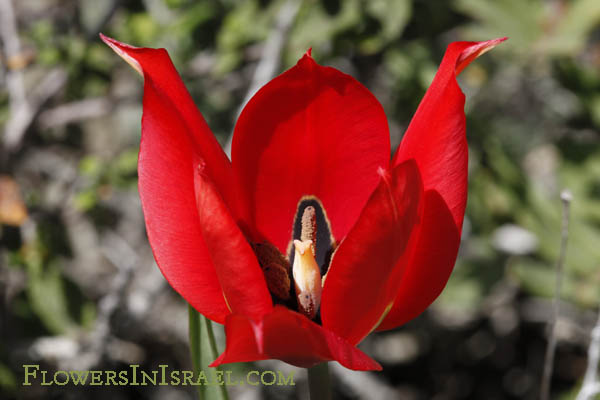
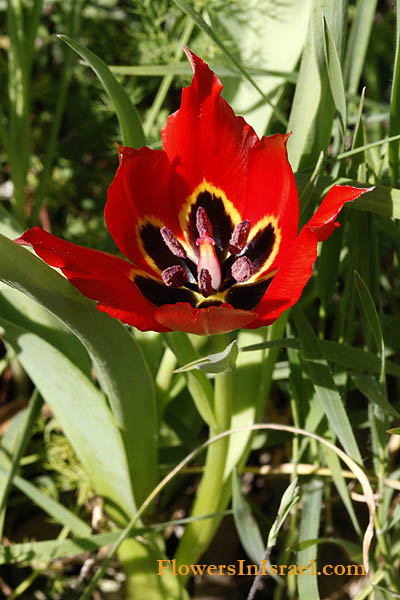
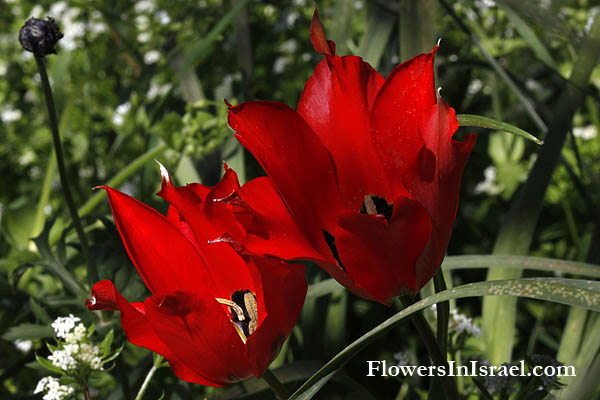
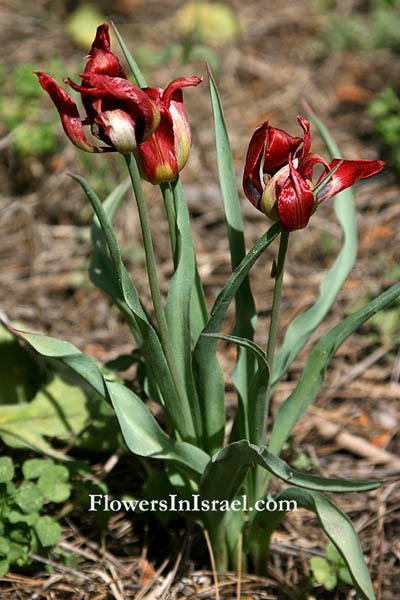
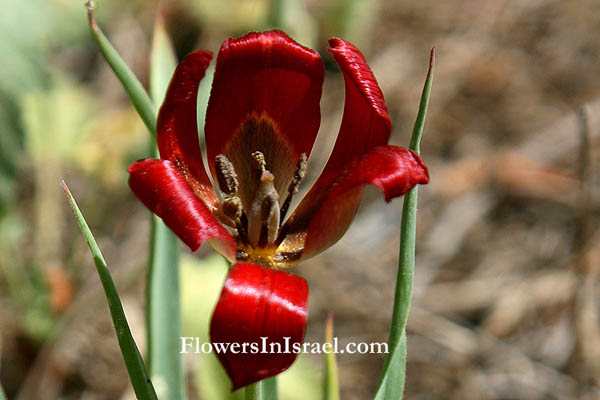
|